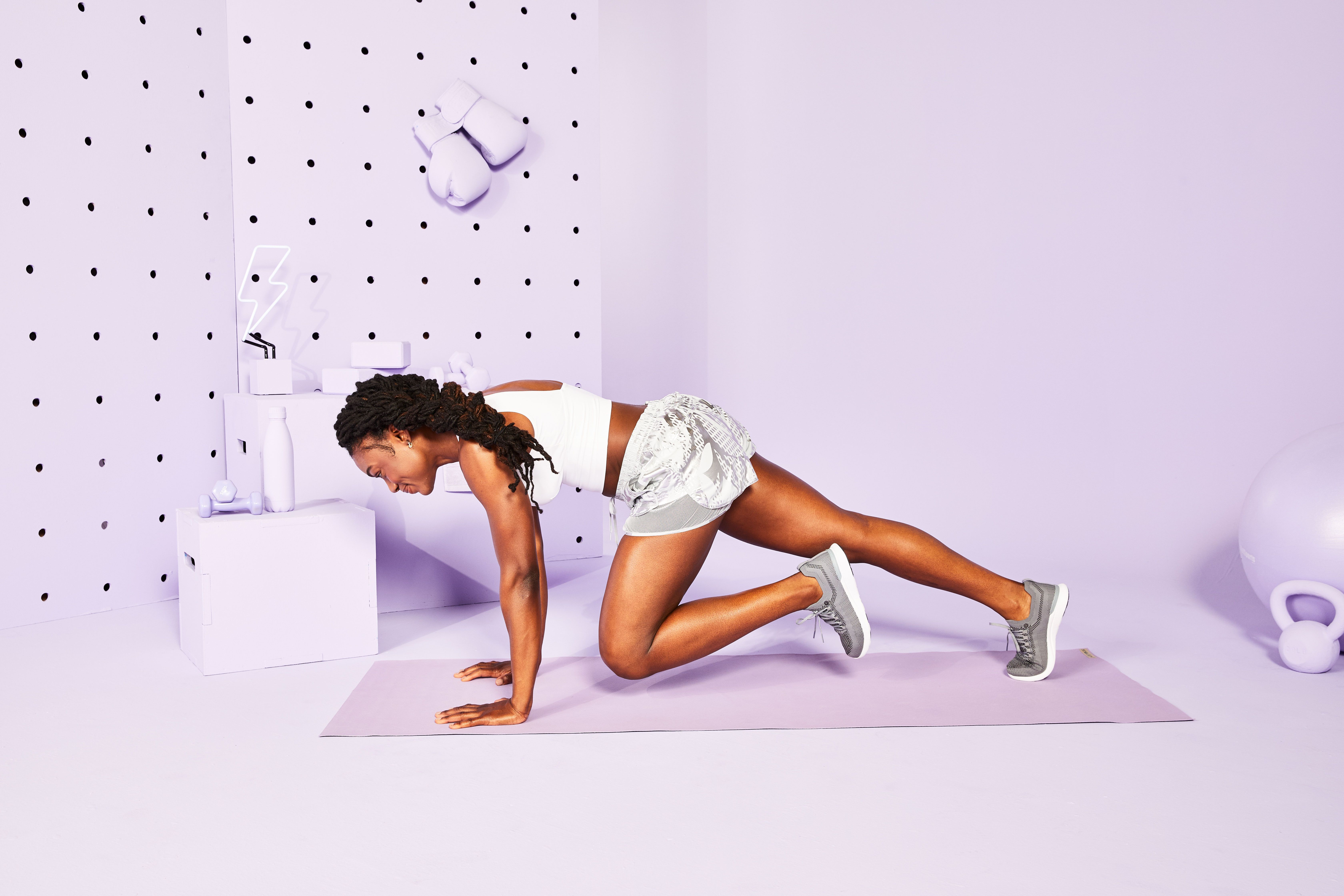Real talk: Improving ankle stability ranks about as high as changing the air filter or cleaning the inside of your oven on most people’s to-do lists. But it’s actually super important for daily movements like, ugh, walking: “Strong calf muscles create strong and stable ankles, which is what helps you stabilize when your foot lands,” says Jacquelyn Baston, CSCS, owner of Triple Fit in Chicago. The stronger this muscle group, the more powerful your jumps, sprints, and lifts will be—and the lower your risk of injury.
How To Do Calf Raises
How to: Stand on a flat surface with your toes pointed straight ahead. Lift your heels off the floor to flex your calf muscle. Pause for moment, then slowly return to the floor. That’s one rep.
Calf raises are great for boosting ankle stability and overall balance. Plus calf strength!
Reps/sets for best results: Start with two sets of 10 to 15 reps, resting 30 to 60 seconds between sets. You should feel a burn (but not pain) by the end of each set; if not, up your rep count, Baston says.
Form tips: The one thing to watch is your ankles—if this area is weak, your ankles may roll in or out which can create imbalances and lead to injury at the ankles and knees, Baston explains. If this is the case, do ankle-strengthening exercises before you start bringing calf raises in to your workouts. And you can stand close to a wall for balance if necessary.
Benefits Of Calf Raises
Calf raises primarily work, you guessed it, the calf muscle. But they also involve the gastrocnemius and the soleus—two muscles that attach to the heel bone via your Achilles tendon—and the plantaris, that tendon most of us only know for plantar fasciitis, according to Baston.
This move is great for improving ankle stability, strength, and subsequently overall balance. That’s beneficial if you do a lot of explosive movements like jumping, since your ankle is what stabilizes your leg when you land. Ankle support is also crucial for heavy lower body lifts, she adds.
Make Calf Raises Part Of Your Workout
One great thing about this move is you can do it pretty much anywhere—Baston says she likes to do them while brushing her teeth.



If you want to bring it into your structured workout, though, aim to incorporate calf raises two to three days per week.
Because calf raises are a single-joint, isolation exercise, it’s important to pair them with other exercises that strengthen the joints this muscle group is attached to, Baston advises. In this case, that’s the ankle joint below and the knee above.
Start by adding calf raises as a superset following squats or lunges. As you become stronger, you can start pairing the burner with plyometric movements that isolate the calf muscle further, like jumping rope or jump squats. You can also make it harder, by performing calf raises standing on one leg or holding a dumbbell in your hands.
Want a complete lower-body workout? Try this routine:
For an added stretch of the Achilles tendon and to work the ankle’s range of motion, you can also stand on a step or elevated surface and let your heel extend slightly below the foot before lifting the heel to contract the calf.
And speaking of stretching, be sure you stretch after a workout that includes this move. “This is a muscle group that can have a hard time recovering and lead to injury in the arches of the feet, like plantar fasciitis, if you don’t stretch it after,” Baston says. Wall lunges and downward dog post-workout should do the trick.
Source: Read Full Article
